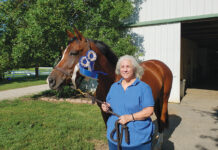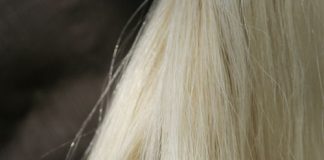The ever-increasing fuzz on your horse’s coat tells you that winter is on its way. If your horse’s winter coat is causing him to overheat during workouts, it might be time to think about body clipping.
1. Clip a clean horse. Give your horse a soapy bath, and allow him to dry completely, before you clip him. Vacuum or towel-bathe him in cold weather. Dirt on your horse’s coat will make your blades clip unevenly and can even strain and overheat your clippers.
2. Clip in a well-lighted area. You can’t clip what you can’t see.
3. Make sure your clippers are in good repair. Nothing is worse than getting halfway through a clipping job, only to have your clippers die on you. Send them out to be cleaned and oiled once a year.
4. Use new blades, or sharpen your old ones. Clipper blades should be resharpened after five or six body clips.
5. Keep your clippers cool with oil or cooling spray. Clippers heat up when they work hard. When this happens, stop for a moment, dunk running clippers in blade wash, or spray them with a cooling product. Oil blades and clippers frequently. Towel off excess oil or cooling products before continuing.
6. Assemble all your tools before you start. Organize your equipment so you don’t waste time and test your horse’s patience by running hither and yon to fetch essentials.
7. Know the horse you are clipping. You can’t clip a moving target. Take time to acquaint your horse to clippers, and clip him in stages, if needed, to keep him relaxed. Find a patient friend to hold your horse while you work. Consider sedation by a veterinarian if your horse won’t stand still for the job.
8. Use a sturdy, outdoor extension cord that’s long enough to stay safely clear of entanglement in your horse’s legs.
9. Be patient. A good professional needs two hours to body-clip a horse. Mere mortals take longer.
10. Clip appropriately. First time clipper? Then tackle only large, easily clipped body areas first. Use a trace or hunter clip, where you leave difficult areas like the legs, face and elbows untouched. Removing your horse’s winter coat obligates you to blanket him accordingly. A full body clip requires extensive blanketing; other clips, which leave more coat intact, require less. Your blanketing budget should match the clip you select.
Learn More: Show Grooming Countdown
Annie Eldridge is an upper-level eventer and HI’s regular English Training Talk columnist.







Some neat little things I hadn’t thought about before. Thanks!